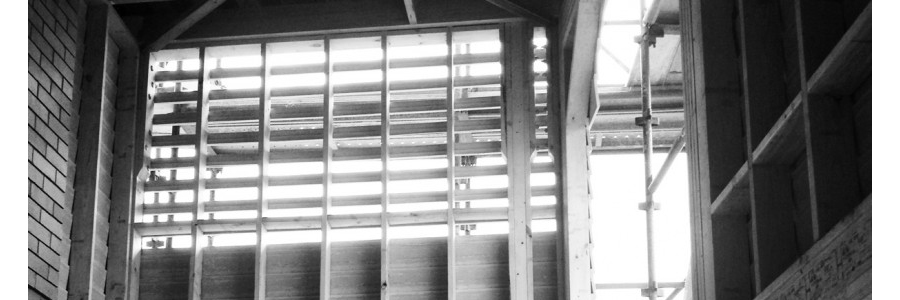We love the work of OVP. Theirs is a humble authentic architecture, it stands out in a world where 'the spectacular’ is too often the dominant pursuit. Thanks to Design On-line for this insightful post.
Words by Paul Owen, Director or Owen Vokes Peters
“Beautiful ideas can be derived from simple, honest work—and innovation can be discovered rather than sought. These things might be achieved by trusting in the ordinary.” – Paul Owen, Principal of Owen and Vokes and Peters
I work in an architectural studio where many of our ideas come from the ordinary things found around us. We think that beautiful work can be made from simple ideas and observations. In everyday life there are things that seem amazing—and things that seem ordinary. I wonder if sometimes we get them mixed up.
When asked to explain the work of our architectural practice, I sometimes liken us to scientists. Our work can involve collecting ordinary data—words / photographs / mapping / sketching / numerical data. A few years ago it occurred to me that we were conducting a kind of base-level–research into the field in which we work—the Australian suburbs. Many of our architectural ideas and values came from this research. From this notion comes the idea that it’s possible to make beautiful, meaningful things from observing the ordinary.
Fourteen years ago I sat at my drawing board to start practicing architecture on my own. I was a registered architect with experience in a range of building types. Yet, I found I had no idea how to start making the most fundamental of buildings—a family house. Sitting clueless at the drawing board was instructive—I realised that I had no position on architecture. I had mistaken familiarity with the processes of the architectural profession with true knowledge and ideas. I had heard great architects saying they are in a phase of learning, even in the late stages of their illustrious careers. So I set about a relearning process.
Two years after the drawing board anxiety attack I joined practice with Stuart Vokes and soon after Aaron Peters joined us. The three of us spent constant hours in architectural conversation. Meanwhile, driven by a common desire to just make buildings we set about our work in the low-density suburban setting of Brisbane.
Our commissions followed the same basic process—a process repeated with each new project. We measured existing buildings / then drew them / listened to our clients briefing narratives / then designed interventions so the floor plans would suit the daily patterns of our clients. In the first ten years of our practice we did this over three hundred times.
We have always had an ongoing dialogue within the practice. This has occurred informally through casual discussions and the sharing of images, ideas, and experiences—and has been enabled because we work in a single studio / room. The discussions have not been recorded—they are fluid, ongoing and always evolving.
As the practice undertakes more and more raw-data collection, measuring vernacular buildings and recording what we measure, we share our experiences. Over time, these discussions have become a collective mental library of knowledge updated and preserved by each member of the practice and expanded by each subsequent commission.
We are fortunate that this started to occur naturally through the inherent repetition of undertaking similar commission types. The work produced from these commissions is easily comparable to other projects within the office and can be drawn upon to inform subsequent commissions. To this end, the dialogue of our practice and the values generated from it, lead to the actual ideas embodied in built work.
Last year, when I was asked by the Queensland Museum to select items from their back of house collection, to convey a sentiment important to me, I chose to return to the ordinary. I wanted to show the work of entomologists because I felt that the work we do in our studio has similarities to theirs—we discover things through field research.
When visiting a museum, the work of an entomologist is often presented in the form of a large collection of insects arranged in a matrix in a display case. Some insects may appear to be beautiful, and some may appear to be ugly—but this information doesn’t reveal the whole story, and that’s what interests me. For example, an entomologist researching hoverflies knows that they are important pollinators of plants—and in some species their lava can help to eradicate pests. This information might lead someone to think fondly of a fly—as they might think of a bee or butterfly. Understanding that the beauty of a creature, a place, or an object might be found in its utility is to discover authenticity.
Further, seeing that undertaking ordinary work-tasks can lead to amazing discoveries was demonstrative for me. Rather than starting with the aim of yielding something amazing, the entomologists use a process where the key premise is to record the simple facts.
The ideas we use in our buildings come from simple places—narratives about family utilitarian patterns / observations of traditional construction details / understanding contemporary trade-based construction / simple climatic data such as sun angles / noticing small scale suburban structures, many of which are home-made garden objects.
Beautiful ideas can be derived from simple, honest work—and innovation can be discovered rather than sought. These things might be achieved by trusting in the ordinary.
Link: http://designonline.org.au/content/trusting-in-ordinary-practice/
